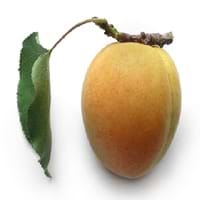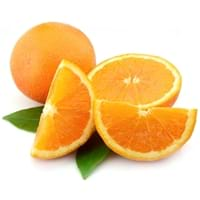Benefits
Health Benefits
Asthma treatment, Cancer prevention, Controls blood pressure, Digestive aid, Heart care, Maintains hormonal balance, Regulation of heart rate, Skin cleansing, Skin rejuvenation
Arthritis treatment, Cancer prevention, Heart care
General Benefits
Boosts immune system, Controls blood pressure, Digestive aid, Eye care, Maintains healthy cholesterol level, Strengthens bones
Anti-inflammatory properties, Cures cough, Cures fever, Digestive aid, Healing of wounds, Maintains healthy cholesterol level
Skin Benefits
Hydrates skin, Reduces wrinkles, Treatment of dark spots, Treatment of skin diseases
Anti-aging benefits, Brightens and lightens complexion, Reduces wrinkles, Treatment of dark spots
Hair Benefits
Good conditioner, Regulates hair growth, Rejuvenates scalp, Softening mask, Treatment of dandruff
Promotes longer and healthier hair, Protects hair, Rejuvenates scalp, Shiny hair
Allergy
Allergy Symptoms
Abdominal cramps, Anaphylaxis, Breathing difficulty, Diarrhea, Itching of mouth, Itching sensation in throat, Swelling of mouth, tongue or lips, Vomiting, Wheezing
Abdominal cramps, Hives, Itching, Nausea, Wheezing
Side Effects
Dizziness, Headache, Nausea, Vomiting
Allergic reaction, Skin rash, Possibly unsafe during pregnancy
Recommeded for
Pregnant Women
Yes
Yes
Lactating Women
Yes
No
Best Time to Eat
Best if taken as a breakfast (or empty stomach), As a snack in the late afternoon, Don't consume at night and before bed, Eat the fresh ones, avoid mixing with any other foods, don't eat after meal.
As a snack in the late afternoon, Eat the fresh ones, avoid mixing with any other foods, don't eat after meal., Morning time (before lunch), Strictly avoid empty stomach
Nutrition
Serving Size
100 g
100 g
Carbs
11.00 g
99+
13.34 g
35
Fiber
2.00 g
26
1.80 g
28
Sugar
9.00 g
28
10.58 g
19
Protein
1.40 g
16
0.81 g
36
Protein to Carb Ratio
0.13
13
0.06
21
Vitamins
Vitamin A (Retinol)
96.00 mcg
6
34.00 mcg
15
Vitamin B1 (Thiamin)
0.03 mg
31
0.06 mg
16
Vitamin B2 (Riboflavin)
0.04 mg
23
0.04 mg
26
Vitamin B3 (Niacin)
0.60 mg
25
0.38 mg
38
Vitamin B5 (Pantothenic Acid)
0.24 mg
22
0.22 mg
28
Vitamin B6 (Pyridoxin)
0.05 mg
33
0.08 mg
21
Vitamin B9 (Folic acid)
9.00 mcg
26
16.00 mcg
19
Vitamin C (Ascorbic Acid)
10.00 mg
99+
26.70 mg
34
Vitamin E (Tocopherole)
0.89 mg
11
0.20 mg
29
Vitamin K (Phyllochinone)
3.30 mcg
20
0.00 mcg
36
Lycopene
0.00 mcg
9
0.00 mcg
9
Lutein+Zeaxanthin
89.00 mcg
15
138.00 mcg
6
Choline
2.80 mg
29
10.20 mg
6
Fat
0.40 g
21
0.31 g
27
Minerals
Potassium
259.00 mg
26
166.00 mg
99+
Iron
0.40 mg
29
0.15 mg
99+
Sodium
1.00 mg
20
0.00 mg
21
Calcium
13.00 mg
28
37.00 mg
10
Magnesium
10.00 mg
25
12.00 mg
23
Zinc
0.20 mg
14
0.07 mg
26
Phosphorus
23.00 mg
22
20.00 mg
25
Manganese
0.08 mg
36
0.04 mg
99+
Copper
0.08 mg
30
0.04 mg
99+
Selenium
0.10 mcg
16
0.10 mcg
16
Fatty Acids
Omega 3s
0.00 mg
38
18.00 mg
26
Omega 6s
77.00 mg
26
48.00 mg
34
Sterol
Phytosterol
18.00 mg
6
Not Available
Water Content
86.35 g
31
85.17 g
37
Ash
0.75 g
15
0.38 g
34
Calories
Serving Size
100 g
100 g
Calories in Fresh Fruit with Peel
48.00 kcal
25
Not Available
Calories in Fresh Fruit without Peel
Not Available
53.00 kcal
13
Calories in Frozen Form
Not Available
Not Available
Calories in Dried Form
241.00 kcal
33
340.00 kcal
12
Calories in Canned Form
63.00 kcal
17
61.00 kcal
18
Calories in Foods
Calories in Juice
58.00 kcal
23
43.00 kcal
34
Calories in Jam
200.00 kcal
26
50.00 kcal
38
Calories in Pie
265.00 kcal
31
370.00 kcal
8
Characteristics
Type
Tree fruit
Citrus
Season
Summer
Winter
Varieties
Gold Cot, Tilton, Wenatchee, Goldbar, Gold Kist, Tomcot, Harcot, Brittany Gold, Harglow, Hunza, Moorpark, Patterson and Royal Rosa
Clementine, Dancy, King Mandarin, Murcott, Ponkan, Robinson, Satsuma and Sunburst
Seedless Variety
No
No
Color
Orange, Yellowish-orange
Orange
Inside Color
Yellow
Orange
Shape
Oval
Round
Texture
Fleshy
Succulent
Taste
Smooth, Sweet
Sweet-Sour
Origin
China
South-Eastern Asia
Grows on
Trees
Not Available
Cultivation
Soil Type
Well-drained
Well-drained
Soil pH
6.5-8
6-7.5
Climatic Conditions
Dry, Hot
Sunny
Facts
Facts about
- 9 Jan is considered as the National Apricot Day.
- Apricots have been around for more than 4000 yrs.
- In latin, the meaning of apricot is 'precious'.
- 95% of apricots in the US are produced by California.
- It is known by another name ' Mandarin'.
- Oil extracted from its peel is used in various skin and hair care products.
- Tangerines is also known as the ‘Christmas Orange’ because it is used to stuff kids' stockings..
In Alcoholic Beverages
Wine
Yes
Not Available
Beer
Yes
Not Available
Spirits
Yes
Not Available
Cocktails
Yes
Not Available
Production
Top Producer
Turkey
China
Other Countries
Algeria, Egypt, France, Iran, Italy, Morocco, Pakistan, Spain, Uzbekistan
Brazil, Iran, Italy, Japan, Korea, Morocco, Spain, Turkey
Top Importer
United States of America
China
Top Exporter
France
Spain
Scientific Name
Botanical Name
Prunus armeniaca
Citrus reticulata
Synonym
Not Available
Citrus clementina or Citrus nobilis
Classification
Domain
Eukarya
Eukarya
Kingdom
Plantae
Plantae
Subkingdom
Tracheobionta
Tracheobionta
Division
Magnoliophyta
Magnoliophyta
Class
Magnoliopsida
Magnoliopsida
Subclass
Rosidae
Rosidae
Order
Rosales
Sapindales
Family
Rosaceae
Rutaceae
Genus
Prunus
Citrus
Species
P. armeniaca
C. reticulata
Generic Group
Rose
Citrus fruit












